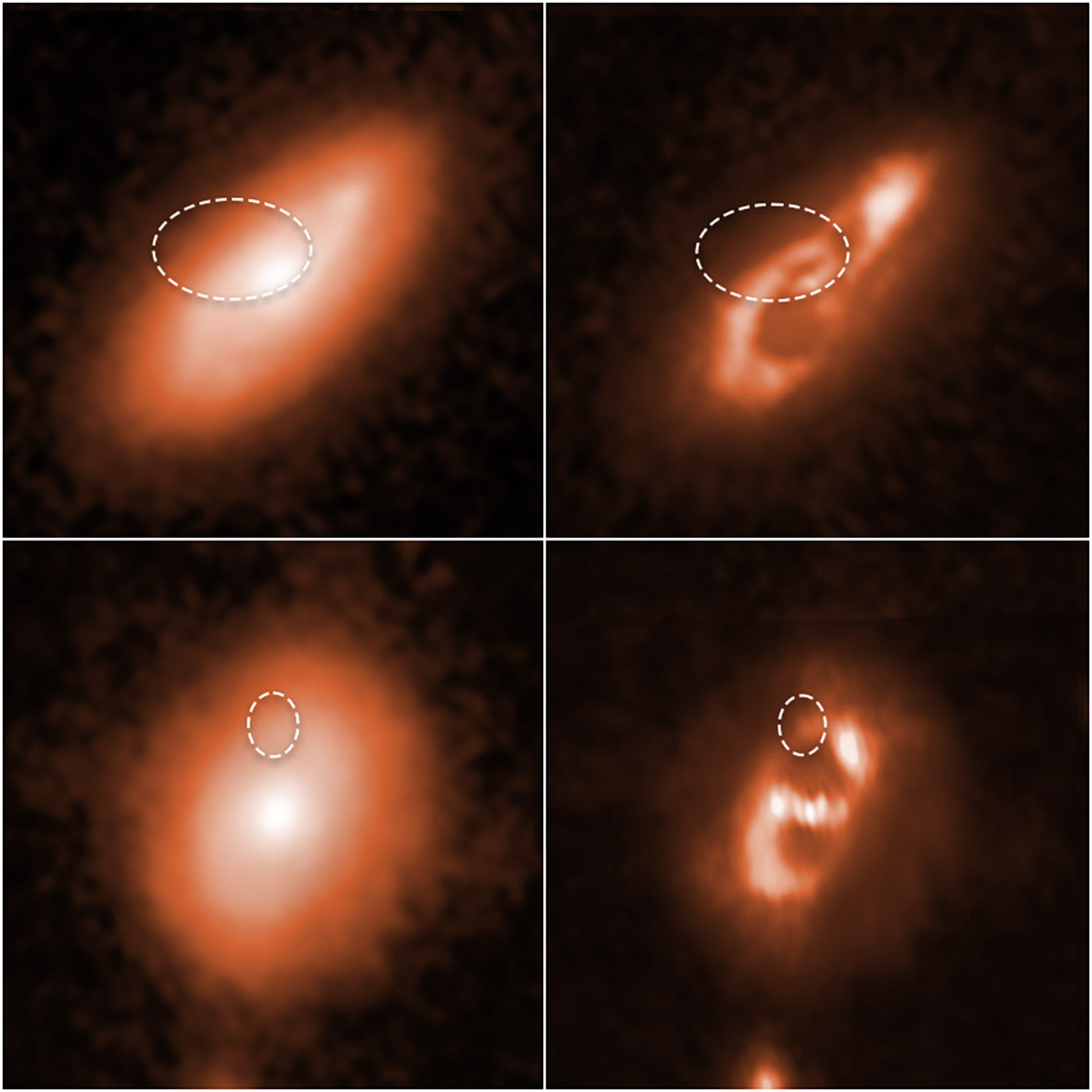STScI: Hubble Tracks Down Fast Radio Bursts to Galaxies’ Spiral Arms

Astronomers using the Hubble Space Telescope have tracked down two brief, powerful radio bursts to the spiral arms of the two galaxies shown at top and bottom of this image. The catalogue names of the bursts are FRB 190714, top row, and FRB 180924, bottom row. The galaxies are far from Earth, appearing as they looked billions of years ago. The dotted oval lines in each of the four images mark the location of the brilliant radio flares. The two images at left show the full Hubble snapshots of each galaxy. CREDITS: SCIENCE: NASA, ESA, Alexandra Mannings (UC Santa Cruz), Wen-fai Fong (Northwestern) IMAGE PROCESSING: Alyssa Pagan (STScI)
Astronomers using NASA’s Hubble Space Telescope have traced the locations of five brief, powerful radio blasts to the spiral arms of five distant galaxies.
Called fast radio bursts (FRBs), these extraordinary events generate as much energy in a thousandth of a second as the Sun does in a year. Because these transient radio pulses disappear in much less than the blink of an eye, researchers have had a hard time tracking down where they come from, much less determining what kind of object or objects is causing them. Therefore, most of the time, astronomers don’t know exactly where to look.
Locating where these blasts are coming from, and in particular, what galaxies they originate from, is important in determining what kinds of astronomical events trigger such intense flashes of energy. The new Hubble survey of eight FRBs helps researchers narrow the list of possible FRB sources.
Flash in the Night
The first FRB was discovered in archived data recorded by the Parkes radio observatory on July 24, 2001. Since then astronomers have uncovered up to 1,000 FRBs, but they have only been able to associate roughly 15 of them to particular galaxies.
“Our results are new and exciting. This is the first high-resolution view of a population of FRBs, and Hubble reveals that five of them are localized near or on a galaxy’s spiral arms,” said Alexandra Mannings of the University of California, Santa Cruz, the study’s lead author. “Most of the galaxies are massive, relatively young, and still forming stars. The imaging allows us to get a better idea of the overall host-galaxy properties, such as its mass and star-formation rate, as well as probe what’s happening right at the FRB position because Hubble has such great resolution.”
In the Hubble study, astronomers not only pinned all of them to host galaxies, but they also identified the kinds of locations they originated from. Hubble observed one of the FRB locations in 2017 and the other seven in 2019 and 2020.
“We don’t know what causes FRBs, so it’s really important to use context when we have it,” said team member Wen-fai Fong of Northwestern University in Evanston, Illinois. “This technique has worked very well for identifying the progenitors of other types of transients, such as supernovae and gamma-ray bursts. Hubble played a big role in those studies, too.”
The galaxies in the Hubble study existed billions of years ago. Astronomers, therefore, are seeing the galaxies as they appeared when the universe was about half its current age.
Many of them are as massive as our Milky Way. The observations were made in ultraviolet and near-infrared light with Hubble’s Wide Field Camera 3.
Ultraviolet light traces the glow of young stars strung along a spiral galaxy’s winding arms. The researchers used the near-infrared images to calculate the galaxies’ mass and find where older populations of stars reside.
